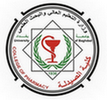The College of Pharmacy discussed the MSc thesis entitled “Formulation and Evaluation of Bilastine Nanosuspension as an Oral Fast Disintegrating Dosage Form” by the student Sarah Adnan Oudah and the supervisor, Assistant Professor Dr. Eman Bakr Al-khedairy, at the pharmaceutics Department. The study aimed to formulate and characterize a nanosuspension formulation of BLA, a Biopharmaceutics Classification System (BCS) Class II drug, to enhance its dissolution rate. Subsequently, the optimized nanosuspension was incorporated into orodispersible films (ODFs) with the aim of improving patient adherence and optimizing therapeutic efficacy. The study included the utilization of the anti-solvent precipitation technique for the preparation of the nanosuspension, employing a range of hydrophilic polymeric stabilizers to ensure formulation stability. The optimized nanosuspension was subsequently incorporated into orodispersible films through the solvent casting method. The results showed that the optimized bilastine nanosuspension, formulated using a 1:1 stabilizer-to-drug ratio with Soluplus®, a solvent-to-antisolvent ratio of 1:6, and subjected to magnetic stirring at 820 rpm, resulted in nanoparticles with a mean particle size of 83.8 nm and a narrow polydispersity index (PDI) of 0.019. This formulation exhibited significantly improved dissolution characteristics, achieving 92.02% drug release in phosphate buffer (pH 6.8) within 90 minutes. The corresponding orodispersible film (ODF), prepared using a 1:1 ratio of polyvinyl alcohol (PVA) to hydroxypropyl methylcellulose E5 (HPMC E5), demonstrated rapid disintegration within 18.3 seconds and released 93.16% of bilastine within six minutes. Furthermore, the ODF maintained its physical stability over a three-month storage period at 25 °C. The study recommended further investigation of the pharmacokinetic and pharmacodynamic profiles of the BLA nanosuspension-based orodispersible film to confirm its in vivo efficacy and bioavailability. Additionally, it emphasized the importance of assessing patient acceptability in comparison to the commercially available bilastine tablet formulation.


